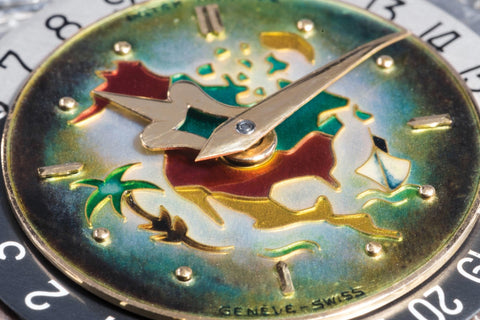Since its creation as a functional watch, the Reverso has since been reinvented as a contemporary dress watch, with its dial becoming the canvas for Jaeger Le-Coultre’s experiments. This special edition Rouge* piece is a bold reimagining of the original reference, with a deeper coloration used to create a contemporary twist on a vintage classic.
FROM POLO TO PRESENT DAY
It's an oft touted narrative that the Reverso began its life as a way for British army officers in India to protect the crystals on their watches during games of polo. This is true, but what gets less attention is the three men who led the charge for this watch, none of which were polo-playing members of the British armed forces. César de Trey, René-Alfred Chauvot and Jacques-David LeCoultre were the most heavily involved with its creation.




The first of this trio who should be introduced is César de Trey, a Swiss Businessman who made his fortune in dental equipment, yet whose passion lay in watches. Travelling the globe for both work and pleasure, he traded a few pieces here and there, and became known amongst the upper-classes for his horological interest. It was this notoriety that led to him being approached by a player at the British India Polo Club, who was concerned about the fragility of the timepieces worn while competing in the rough-and-tumble sport. This was, after all, the final years of the British Raj, so British officers were particularly present in this part of the world.
Captivated with the idea of protecting a watch in extreme conditions, de Trey went away to find the people who could help him bring the project to life. For the revolutionary case, René-Alfred Chauvot was approached, a French engineer who produced the first prototype of the swivelling case. The patent for it was filed at 1:15pm on March 4th, 1931, and just a few months later, on August 3rd, it was granted by the Directorate of Industrial Property and Ministry of Trade and Industry of the French Republic. It wasn't long after this, in November of the same year, that de Trey registered the name Reverso. The patents for the case were originally filed and owned by Chauvot, but it didn't take long for de Trey to buy them off him, seeing the value in this unique protective system.



































































































































































































































